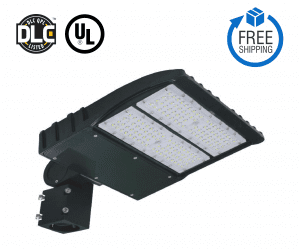Description
- Aluminum heat sink for superior thermal management
- Optional FA8 single pin, G13 double pin or R17D base
- Utilizes LM80 approved SMD LEDs for long lifespan
- Eco-friendly – no mercury or harmful gas
- Energy saving – saves 80% over traditional fluorescent tubes
- Quick start, no flicker soft light, easy on the eyes
- Warranty: 5 year warranty
Specifications
| Nominal Wattage | 36W |
| Lumens | 4,320 |
| LED Lifetime | 50,000 Hours |
| Color Temperature | 5000K |
| Power Factor | 0.95 |
| Temperature Range | (-)20ºC to (+)60ºC |
| Power | Single Pin |
| Lens | Frosted Cover |
| Certifications | ETL |
| DLC Listed | Yes |
| Dimensions (mm) | 8′ |
| Equivalent | 64W |
| Efficacy | 120 Lm/W |
| Operating Voltage | AC 100-277V |
| CRI | >80 |
| Dimmable | NO |
| Optical Control | NO |
| Warranty | 5 Years |
Download Product Cut Sheet
Knowledge Base
Can you put an LED tube in a fluorescent fixture?
You have fluorescent troffers or strip fixtures already, and you’re wondering if you can just pop LED tubes in them or if you’ll need to change out the fixtures for something designed for LED. Good news: You can absolutely use LED tubes in your existing fixtures!
Do I need to remove the ballast to use an LED bulb?
An LED light does not require a ballast because it uses a component called a “driver” to regulate the power going into the bulb.
Can you swap fluorescent for LED?
If you have fluorescent fixtures and are eying the cost- and energy-savings of switching to LED lighting, you’ll find there are two paths you can take: convert your existing fixtures to work with LED or replace those fixtures with new LED fixtures.
How do you bypass a ballast to install LED tubes?
You will need to cut the hot wire which is the wire providing power to the fixture. This wire is usually red or black. It will be located next to a neutral wire, usually white, which you will also need to cut. Make sure you cut them close to the ballast, leaving the longer ends for attachment to the power source.
Do I still need a starter with an LED tube?
LED tubes do not need to have a starter (fuse) and can be fixed to be used without ballast. LED tubes are mostly used for home offices, garages and storage spaces at home. In commercial spaces the LED tubes are used in production facilities, warehouses, factories and shops.
Are LED tubes brighter than fluorescent?
The LED tube lights are noticeably brighter than fluorescent tubes and you don’t get exposed to any kind of harmful rays such as UV/IV rays as well that can damage your eyes and can result in skin allergies as well.
What is the difference between a T8 and a T12 bulb?
The main difference between T8 and T12 tubes is the tube’s diameter. T12 tubes are 1.5″ in diameter while T8s are just one inch. All other things—socket sizes, lengths, distance between pins—are the same. T8 LED tubes won’t fall out if you try to install them in a T12 fixture—they’ll fit just fine.
Will a T8 ballast work with LED bulbs?
Type A – LED tube has an Integrated Driver for use on Existing Fluorescent Ballast. Type A LED tubes need an existing T8 electronic ballast to operate. If you have T8 electronic ballasts this makes installation very easy. All you need to do is remove the existing T8 fluorescent lamp and install a new T8 LED Type A lamp.
Which is cheaper to run LED or fluorescent?
LED lighting is more energy-efficient than fluorescent bulbs. According to the U.S. Department of Energy, a 12 watt LED light puts out the same lighting as a 15 watt fluorescent light. In other words, LEDs use 20% less power. Fluorescent bulbs emit UV light.






